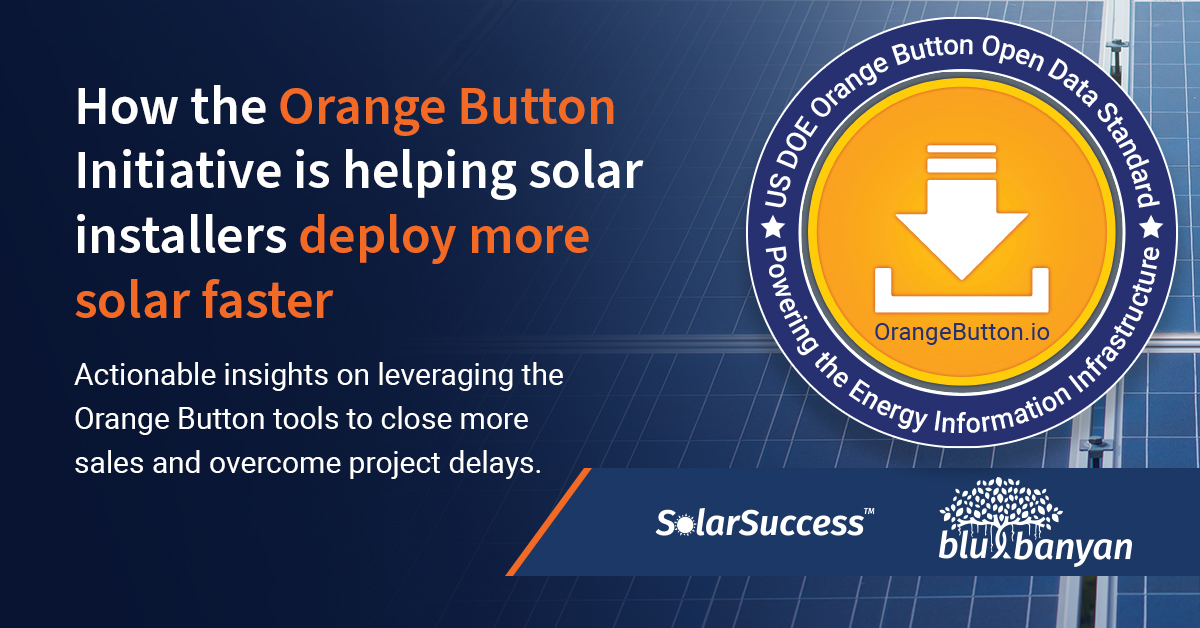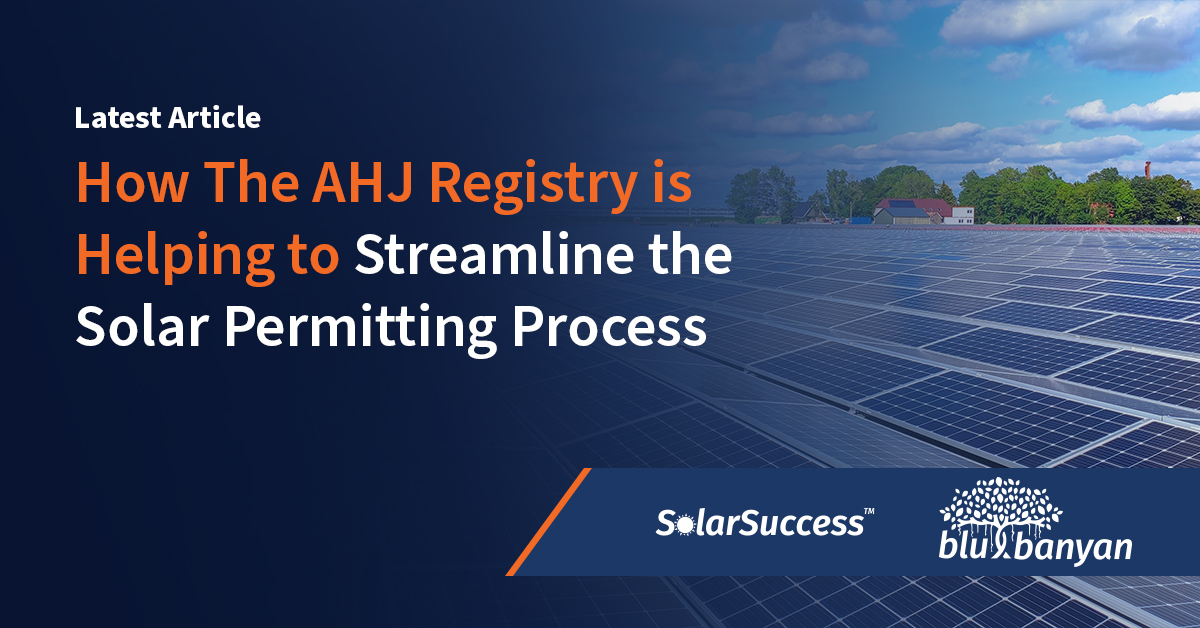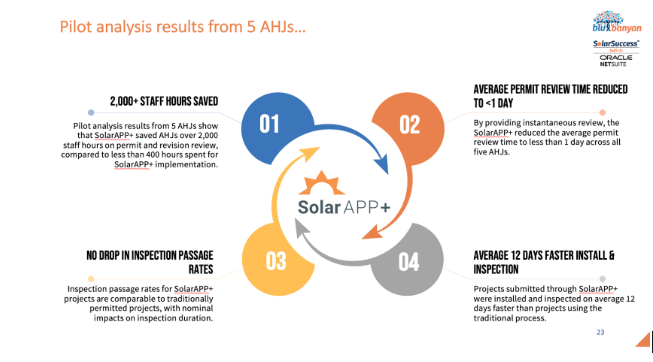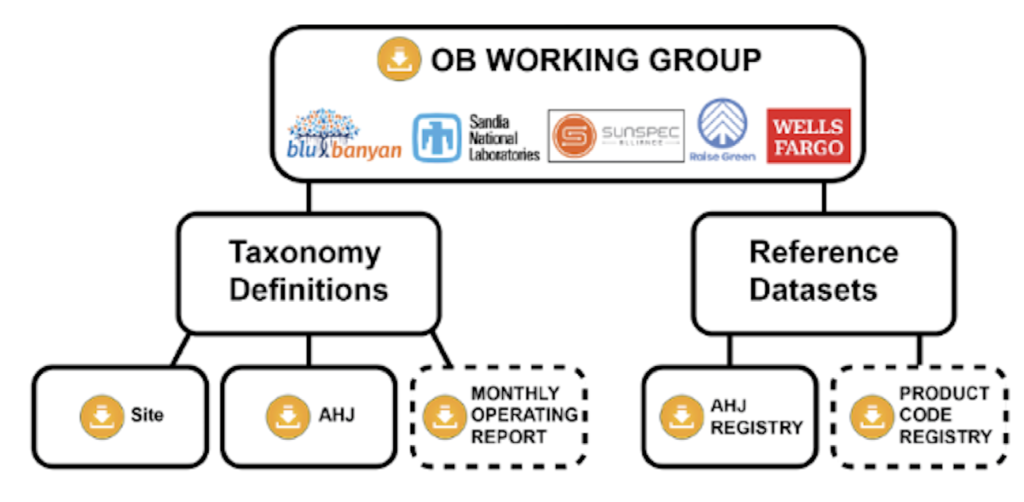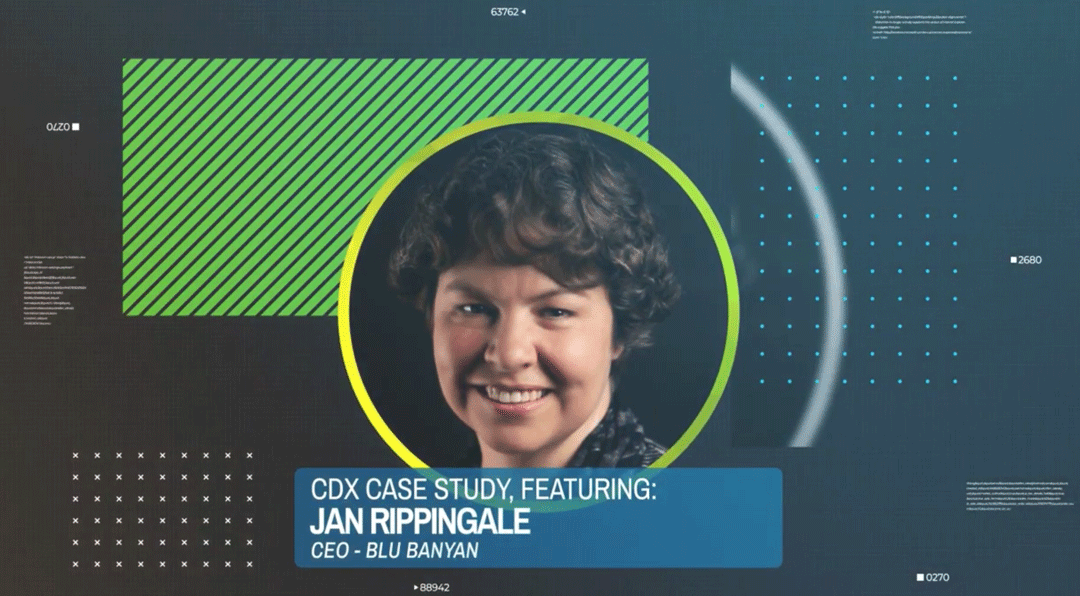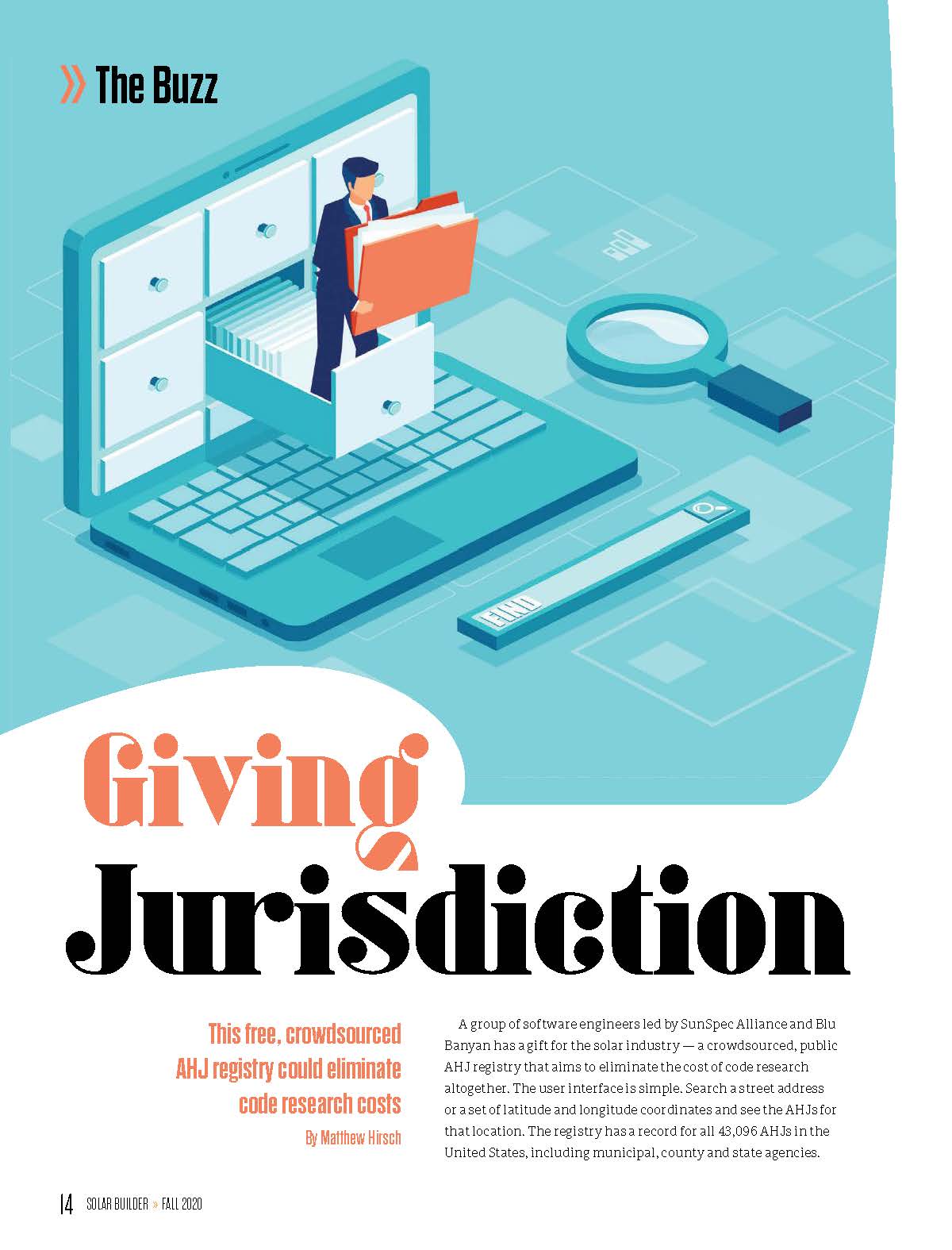This article has been featured in Solar Power World Online on July 21st, 2023.
The collection, recording, organization, structuring, storage and retrieval of solar project data adds substantial soft costs to a solar installer’s business. These costs are incurred primarily as labor necessary to collect, normalize, store and communicate data. An open-source data exchange standard comprising data based on common terms, common datasets and common interoperable software tools is the way to dramatically reduce these costs and thereby help the industry deploy more solar faster.
This is where the Orange Button Initiative comes in.
The initiative started as a public-private partnership funded by the Dept. of Energy. The idea originated in 2016 when the need for improved data interoperability and unified data standards was recognized across the solar industry to reduce market inefficiencies and lower costs for residential, commercial and utility solar projects. This initiative was driven by the need to simplify and standardize solar data so state and local governments, customers, utilities, financiers, solar companies, entrepreneurs and other stakeholders can exchange quality data.
The Orange Button (OB) Working Group (chaired by Blu Banyan, the SunSpec Alliance and Sandia National Laboratories) was tasked to create an open data exchange standard for the distributed solar PV industry to accelerate the deployment of solar projects. The Orange Button initiative was officially launched in 2018, with more than 350 companies contributing to its development. SunSpec is the original lead developer of the technology and the licensee of the Orange Button trademark.
Demystifying the Orange Button initiative
 An electrician benefits from a tremendous number of standards, including what the color wrapping wires means in any house, anywhere. Standards reach into the heart of the daily beat of how an electrician does their work.
An electrician benefits from a tremendous number of standards, including what the color wrapping wires means in any house, anywhere. Standards reach into the heart of the daily beat of how an electrician does their work.
The benefit of this is consistency across buildings, interoperability of different electricians and different inspectors looking at any property for many different purposes, expansion, protection and reclamation. These standards effectively create self-documenting systems that can be traced for easy troubleshooting.
In contrast, data has been the Wild West of construction work and is costing the industry significantly in soft costs. Programmers can make up the meaning of a data element and may or may not specify the unit the data should be in or the timeframe in which the data applies.
Each company can make up what they want and document it as they feel like it.
Imagine if electricians functioned like this.
There would be danger of misunderstanding, misuse and such immense confusion. Training times would increase to learn the lay of the land for any property separately. If one electrician moved or went on vacation, they would have to do a knowledge transfer to another electrician for each property. As nonsensical as this sounds, with all the obvious inefficient overhead, this is exactly what data transfer is like without common data standards. It is expensive, and even potentially dangerous.
For the solar PV industry, there is an alternative — the Orange Button.
Orange Button starts with the basics, like the color of wire sheaths. There are six primitives associated with every fully defined data element (like the color scheme electricians use) clearly stating the value with its units, its time period (where needed) and its precision/decimals where needed for the scientific applications.

Six primitives associated with every fully defined data element
These fully defined data elements provide the “color scheme.” Programmers need to be disciplined in maintaining these like the electricians are with their color schemes.
The simple starting place for a fully defined data element is the foundational “self-documentation” needed to tame the data chaos.
Orange Button reference datasets
There are two key reference datasets from Orange Button – the AHJ Registry and the Solar Product Registry.
The AHJ Registry
A frequent and labor-intensive task for solar installers is identifying the Authorities Having Jurisdiction (AHJ) at a given location.
In the U.S., there are 18,000 permitting jurisdictions and 3,000 utilities with different rules, regulations, building, electrical and other codes that solar systems must comply with.
Take, for example, the city of Houston, Texas, which includes three AHJs with different building, electrical, fire and residential codes. When applying for a solar permit, the major question solar installers have is, “Which AHJ does this address belong to?”

Houston, Texas AHJs.
Errors in permitting applications submitted by solar installers can cause delays in finalizing sales with consumers. The online AHJ Registry helps solar installers instantly determine the AHJ to which their customer’s address is assigned to so they can quickly and rapidly get the codes to support their proposals and permitting requests.
The Solar Product Registry
Solar installers can lose a sale to competitors if they are unable to include the correct products in their design and customer quotes. Currently, finding the right products that are in stock and have the right specs can be cumbersome and costly. The biggest challenge installers face is that the naming and codification of product SKUs are not standardized.
The solar industry needed to have a common way to refer to the same products. The Orange Button Product Registry solves this problem.
The Product Registry uses data from the California Energy Commission (CEC), manufacturers and certification agencies like SunSpec and UL Solutions to keep information up-to-date.
The Product Registry also enables the capability for crowdsourcing error corrections – so if you notice any data is wrong, it can go through the right provisions to update using crowdsourcing, and designers and engineers will have access to make changes to errors.
The Product Registry also has an Orange Button-compliant API that enables solar business applications (like SolarAPP+, Aurora Solar and SolarSuccess) to pull data for your company.
Integration with SolarApp+ — a vision for the future
Development is currently in place to interface instant online permitting service SolarAPP+ with the AHJ and Product Registries and other business applications like SolarSuccess, using the Orange Button API. Once completed, this is how installers can seamlessly integrate with SolarAPP+ to complete their permitting application in one day.

What the future of electronic permitting looks like.
SolarAPP+ is setting the standard for how electronic permitting should be done nationwide across all trades.
Current business application integrations
There are several solar business applications that are utilizing the Orange Button standard for the Application Programmable Interface (API). Among them are:
- Blu Banyan’s SolarSuccess – the business management software for residential, commercial, community & utility solar installers
- Aurora Solar – PV design software
- Enerflo – solar sales and fulfillment platform
- Bodhi – solar customer experience management system
- Soltell — performance analytics and customized service management solutions for asset management software operators and rooftop solar integrators
The Orange Button initiative is a crucial tool to streamline and standardize data based on common terms, datasets, and interoperable software tools. Integrating the AHJ and Product Registry tools into an installer’s workflow can benefit all stakeholders in the solar sales process.


